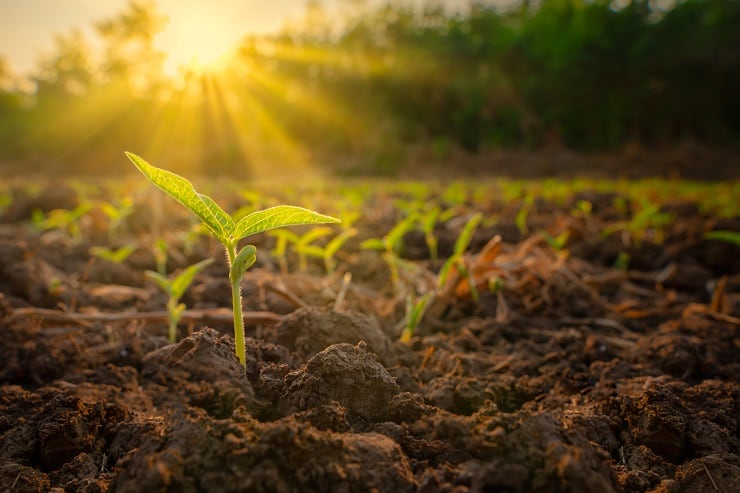In developed countries, we have access to numerous data sets that can help us predict crop yields. Not so in developing countries, many of which rely on crops to a far greater extent than the rich world.
This is particularly important as the effects of extreme heat, which is only increasing due to climate change, can have a catastrophic impact on crop yields. Many developing countries are also very vulnerable to these climatic effects.
However, a new study has found a more efficient way to make these predictions: using satellite images of plants’ fluorescence.
The knowledge of the sun
Using satellite photos, researchers measured solar-induced chlorophyll fluorescence (SIF) (the reddish light re-emitted by photosynthetic tissues and organisms) as a way of predicting and assessing crop yields. While using samples of corn fields in the US and wheat in India, the process should, in theory, work universally. The measurement can serve as a proxy for photosynthetic energy conversion in plants.
While it won’t necessarily give you an exact prediction, it will, in theory, give you a way to model the potential for photosynthesis in a field.
Compared with many of the more traditional methods of predicting crop yields, which rely heavily on available datasets, SIF does not need data to function and thus is a far better fit for developing countries with lower access to data or advanced technology.
Furthermore, unlike many other methods of predicting crop yields, whose ability to cope with changing weather patterns are ‘limited’, the SIF can easily adapt to the unpredictable, as it does not require new data to retrain. Indeed, in contrast to other methods tested, the SIF was far more accurate over the course of the study at predicting yields.
The study did show several weaknesses of the SIF. For example, while it is not sensitive to thin cloud cover, thick clouds can cause problems for it. This was the case in India, where thick cloud cover led to a weaker performance than in the US.
Moreover, a mixed signal from other vegetation types can interfere with the intention of the researchers, who are trying to ascertain the signal from one crop alone.
Finally, high resolution and crop-specific SIF is crucial for the prediction to be accurate. When using non-crop specific SIF, the predictions are not as accurate.
Potential uses for the technology
This could help predict poverty on a village-to-village basis, giving NGOs an idea of whether the crops are able to feed the people, and allowing them to better identify areas in need of food aid.
The researchers are now looking into whether the technology can be used in real-time, allowing farmers to make amendments to their agricultural practices, such as changing the soil or adjusting irrigation strategies.
Sourced From: Environmental Research
'A scalable crop yield estimation framework based on remote sensing of solar-induced chlorophyll fluorescence (SIF)'
Published on: 12 April 2024
Doi: https://doi.org/10.1088/1748-9326/ad3142
Authors: O. Kira, J. Wen, J. Han, A. J McDonald, C. B. Barrett, A. Ortiz-Bobea, Y. Liu, L. You, N. D. Mueller, and Y. Sun


